The name of this pub comes from a quote in Shakespeare’s play Henry IV: ‘Fill me a bottle of sack: our soldiers shall march through; we’ll to Sutton Co’fil’ tonight.’ Shakespeare’s mother, Mary Arden, was a member of a leading local family.
Prints and text about The Bottle of Sack.
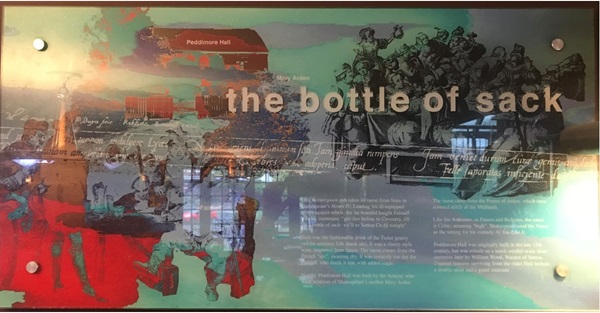
The text reads: This Wetherspoon pub takes its name from lines in Shakespeare’s Henry IV. Leading his ill-equipped rabble against rebels, the fat boastful knight Falstaff tells his lieutenant “get thee before to Coventry, fill me a bottle of sack: we’ll to Sutton Co-fil tonight”.
Sack was the fashionable drink of the Tudor gentry (whilst ordinary folk drank ale). It was a sherry-style wine, imported from Spain. The name comes from the French “sec”, meaning dry. It was certainly too dry for Falstaff, who drank it hot, with added sugar.
Nearby Peddimore Hall was built by the Arden’s, who were relatives of Shakespeare’s mother Mary Arden.
The name came from the Forest of Arden, which once covered much of the Midlands.
Like the Ardennes, in France and Belgium, the name is Celtic, meaning “high”. Shakespeare used the French as the setting for his comedy As You Like It.
Peddimore Hall was originally built in the late 13th Century, but was rebuilt on a much smaller scale three centuries later by William Wood, Warden of Sutton. Unusual features surviving from the older Hall include a double moat and a gated staircase.
A print depicting Tudors drinking sack.
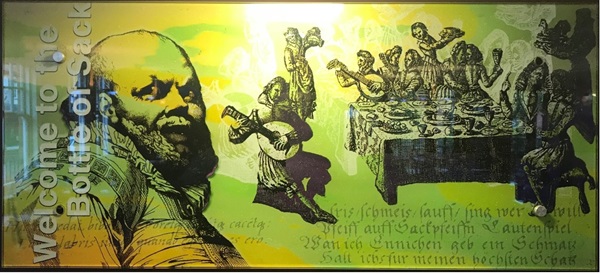
A print of the Lower Parade in 1870.
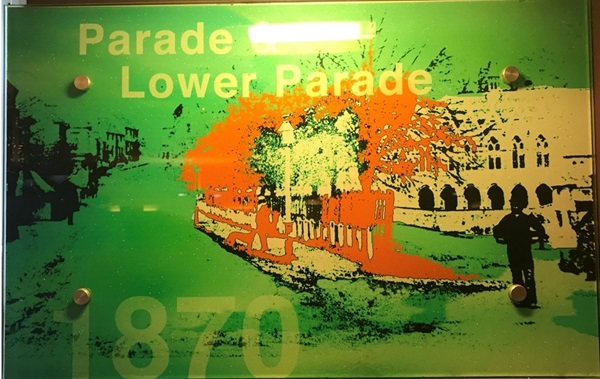
A print and text about Sir John Falstaff.
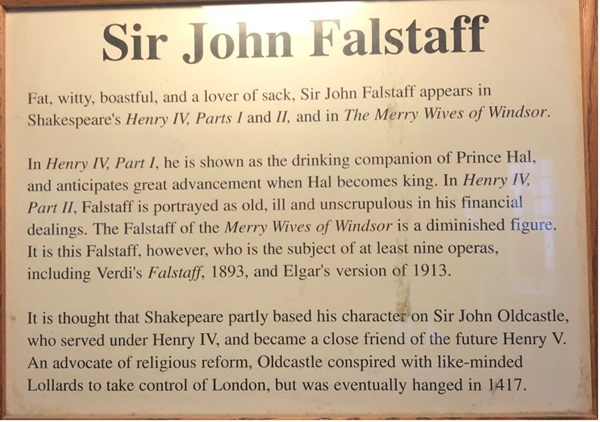
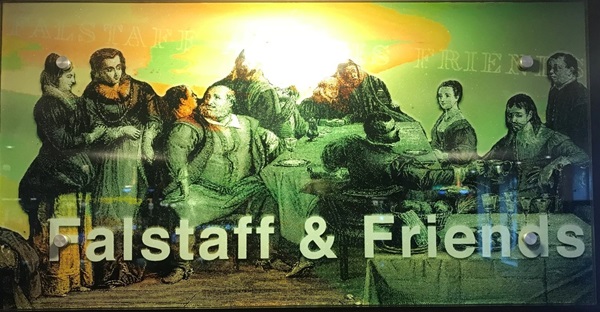
The text reads: Fat, witty, boastful, and a lover of sack, Sir John Falstaff appears in Shakespeare’s Henry IV, Parts I and II, and in The Merry Wives of Windsor.
In Henry IV, Part I, he is shown as the drinking companion of Prince Hal, and anticipates great advancement when Hal becomes king. In Henry IV, Part II, Falstaff is portrayed as old, ill and unscrupulous in his financial dealings. The Falstaff of the Merry Wives of Windsor is a diminished figure. It is this Falstaff, however, who is the subject of at least nine operas, including Verdi’s Falstaff, 1893, and Elgar’s version of 1913.
It is thought that Shakespeare partly based his character on Sir John Oldcastle, who served under Henry IV, and became a close friend of the future Henry V. An advocate of religious reform, Oldcastle conspired with like-minded Lollards to take control of London, but was eventually hanged in 1417.
A print of Sutton.
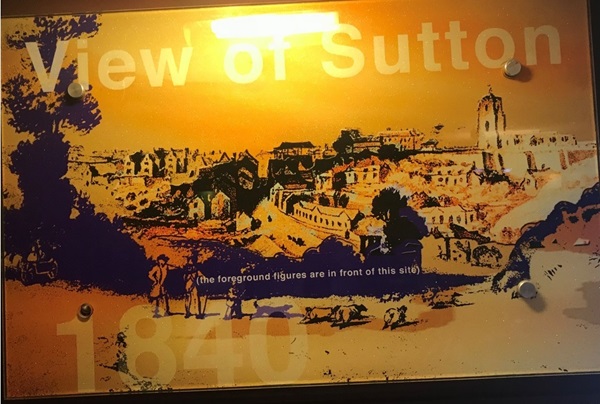
Text about the Lower Parade.
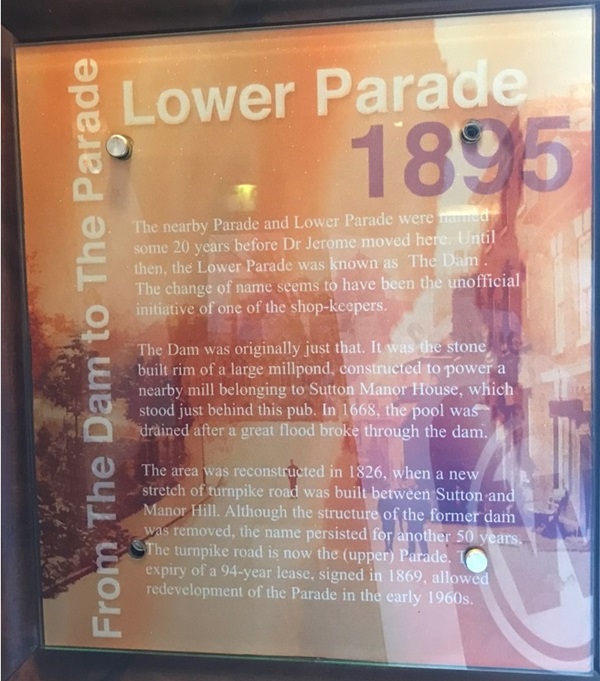
The nearby Parade and Lower Parade were named some 20 years before Dr Jerome moved here. Until then, the Lower Parade was known as The Dam. The change of name seems to have been the unofficial initiative of one of the shop-keepers.
The Dam was originally just that. It was the stone built rim of a large millpond, constructed to power a nearby mill belonging to Sutton Manor House, which stood just behind this pub. In 1668, the pool was drained after a great flood broke through the dam.
The area was reconstructed in 1826, when a new stretch of turnpike road was built between Sutton and Manor Hill. Although the structure of the former dam was removed, the name persisted for another 50 years. The turnpike road is now the (upper) Parade. The expiry of a 94 year lease, signed in 1869, allowed redevelopment of the Parade in the early 1960s.
Prints and text about local landmarks.
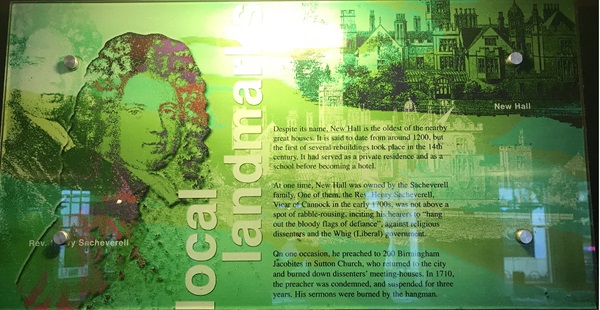
The text reads: Despite its name, New Hall is the oldest of the nearby great houses. It is said to date that from around 1200, but the first of several rebuildings took place in the 14th century. It had served as a private residence and as a school before becoming a hotel.
A print of Blind Hill (now Trinity Hill), 1800.
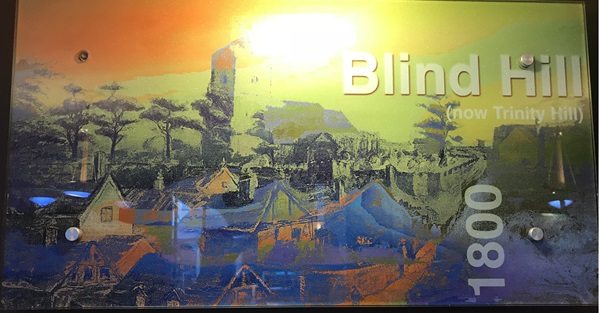
Plans for the original house on this site built for Dr Jerome.
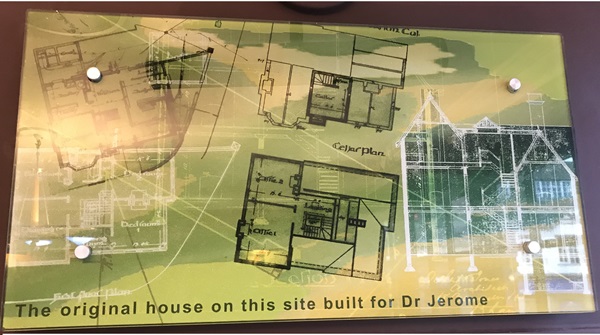
Prints and text about the Civil War.
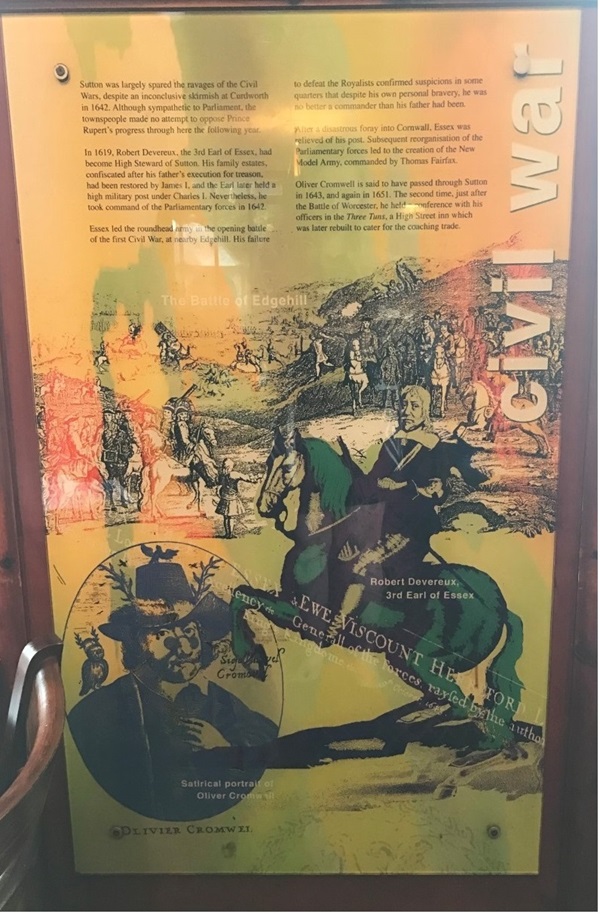
The text reads: Sutton was largely spared the ravages of the Civil Wars, despite an inconclusive skirmish at Curdworth in 1642. Although sympathetic to Parliament, the townspeople made no attempt to oppose Prince Rupert’s progress through here the following year.
In 1619, Robert Devereux, the 3rd Earl of Essex, had become High Steward of Sutton. His family estates, confiscated after his father’s execution for treason, had been restored by James I, and the Earl later held a high military post under Charles I. Nevertheless, he took command of the Parliamentary forces in 1642.
Essex led the roundhead army in the opening battle of the first Civil War, at nearby Edgehill. His failure to defeat the Royalists confirmed suspicions in some quarters, that despite his own personal bravery, he was no better a commander than his father had been.
After a disastrous foray into Cornwall, Essex was relieved of his post. Subsequent reorganisation of the Parliamentary forces led to the creation of the New Model Army, commanded by Thomas Fairfax.
Oliver Cromwell is said to have passed through Sutton in 1643, and again in 1651. The second time, just after the Battle of Worcester, he held a conference with his officers in the Three Tuns, a High Street inn which was later rebuilt to cater for the coaching trade.
Prints and text about the arrival of the railways.
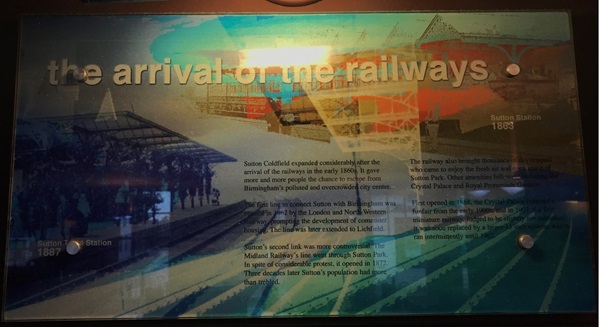
The text reads: Sutton Coldfield expanded considerably after the arrival of the railways in the early 1860s. It gave more and more people the chance to escape from Birmingham’s polluted and overcrowded city centre.
The first line to connect Sutton with Birmingham was opened in 1862 by the London and North Western Railway, prompting the development of commuter housing. The line was later extended to Lichfield.
Sutton’s second link was more controversial. The Midland Railway’s line went through Sutton Park. In spite of considerable protest, it opened in 1872. Three decades later Sutton’s population had more than trebled.
The railway also brought thousands of day-trippers who came to enjoy the fresh air and open space of Sutton Park. Other amenities followed including the Crystal Palace and Royal Promenade Gardens.
First opened in 1868, the Crystal Palace featured a funfair from the early 1900s, and in 1907, the first miniature railway. Judged to be slightly tan miniature, it was soon replaced by a larger 15 inch system, which ran intermittently until 1962.
External photograph of the building – main entrance.
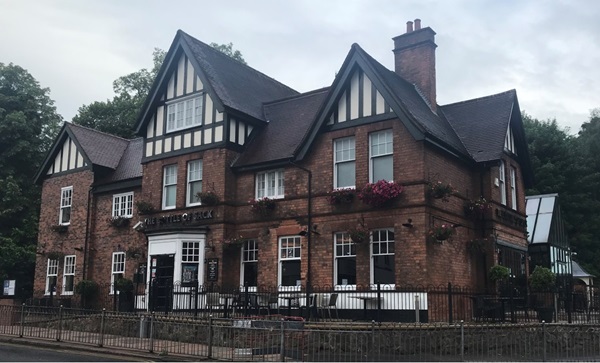
If you have information on the history of this pub, then we’d like you to share it with us. Please e-mail all information to: pubhistories@jdwetherspoon.co.uk